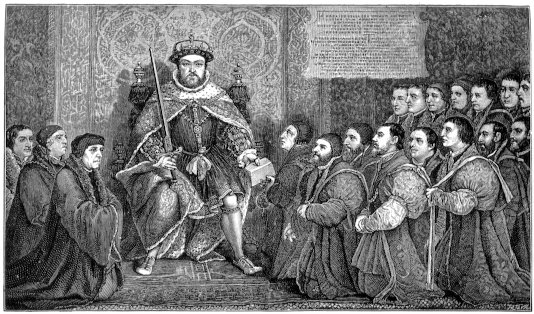The Sign of the Barber Pole
Today, reflections in a barbershop. The University of Houston's College of Engineering presents this series about the machines that make our civilization run, and the people whose ingenuity created them.
Barbers and surgeons used to be one and the same. The red stripes on a barber's pole signify the once-bloody work of the surgeon. That goes back at least to ancient Assyria, where the symbols for knife and for barber are related. Barber-surgeons turn up in Egyptian literature. Some Roman barbers did a form of plastic surgery in which they removed the brand marks from freed slaves.

British author William Andrews published a very popular book on barbering, At the Sign of the Barber Pole, in 1904. That was just as men's styles moved back from bearded to clean-shaven. The book was reprinted in 1969, as another shift in hair management was taking place. The musical show Hair had reached Broadway the year before and had become the rallying point for a populist anti-war revolution. Long hair was the badge of that movement.
Andrews' book tells about the profession of the barber-surgeon from the fifteenth century onward. His major interest is in changing beard and hairstyles. Without our arrays of shaving creams and electric razors, a shave or a trim was once far more labor-intensive than it is today. (I've shaved my face some twenty thousand times by now. Even with modern equipment, I've spent almost a full working year doing so.)
In the world Andrews describes, the barbershop was a meeting place where you socialized and listened to live music (maybe a lute or, later, a vocal quartet). You obeyed strict rules of decorum. The barber was the respected manager of this public salon.
But, as a skilled wielder of instruments, he also worked as a surgeon. He let blood, opened abscesses, pulled teeth. And he did some remarkably complex operations. He removed cataracts and kidney stones. Only as medicine began taking its modern form in the sixteenth century did the barber-surgeon's role begin to shrink.
Artist Hans Holbein's last and largest painting was a six-by-ten-foot picture of Henry VIII receiving the Company of Barber-Surgeons. Henry finally proclaimed that barbers must limit themselves to such minor procedures as bloodletting and tooth pulling, and that surgeons would quit cutting hair and shaving people. An age was ending, and Holbein's figures all look pretty grim.
Andrews goes on to talk about the longhaired Cavaliers who fought Cromwell's cropped-headed forces during the English Civil War in the seventeenth century. He talks about eighteenth-century wigs. He tells how beards came back around 1850, and how they were just going out of favor once again in his own time.

My first barber was an august black gentleman whom I knew only as Mr. Williams. Those haircuts, so long ago, were moments of ceremony, quiet, and grace. I may've been only six, but Mr. Williams' barber-chair was, in fact, a form of Zen preparation for adulthood. For here it became evident that even a moment of quiet could become a form of life in motion.
I'm John Lienhard, at the University of Houston, where we're interested in the way inventive minds work.
(Theme music)
Andrews, W., At the Sign of the Barber's Pole: Studies in Hirsute History. Cottingham, Yorkshire: J. R. Tutin, 1904.
Majno, G., The Healing Hand: Man and Wound in the Ancient World. Cambridge, MA: Harvard University Press: 1975.
The intensity of people's responses to hair remains with us. I have a colleague at the UH Library who told me about a patron who, seeing that he wore his hair in a long ponytail, told him he was violating a biblical injunction that only women should wear their hair long. The patron told the fellow that he was destined for eternal damnation.

Andrews' rendering of Holbein's painting